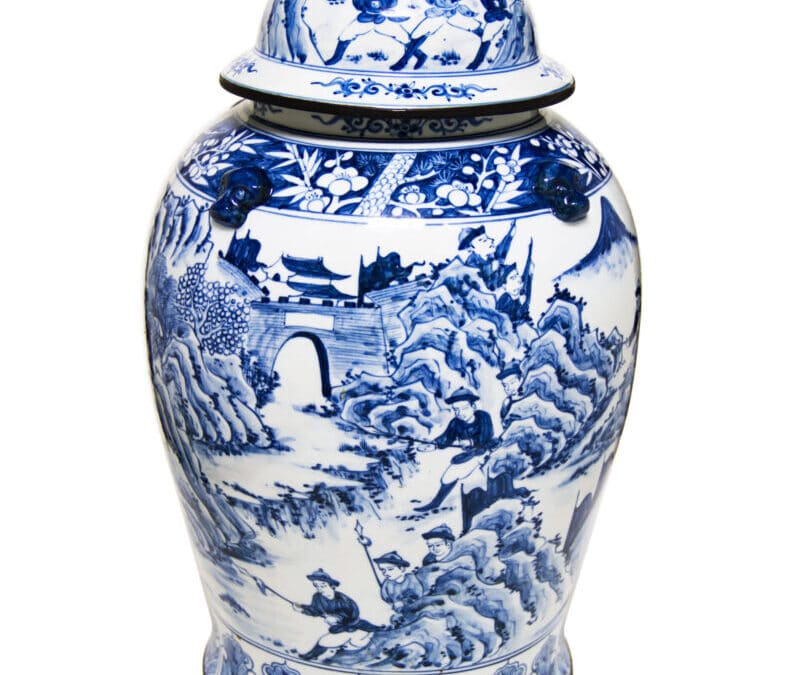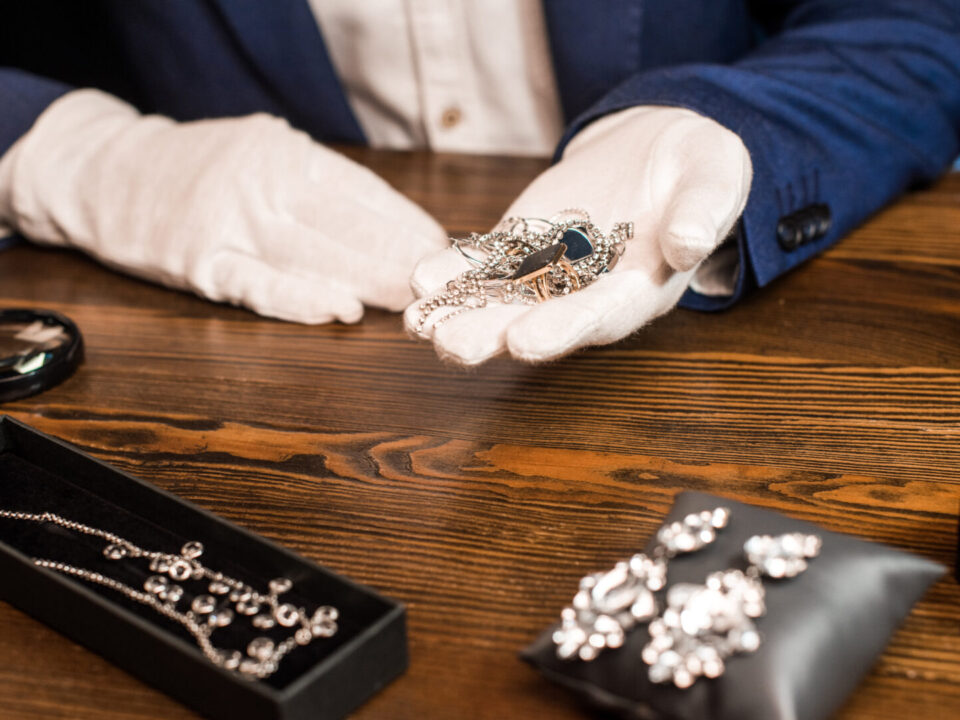Chinese ceramics include both pottery and porcelain. Pottery is the foundation for porcelain. The difference is in the temperature used for firing the finished object. Ceramics are objects formed from clay, hardened by firing, and decorated and glazed. The three types of ceramics are earthenware, stoneware and porcelain. Earthenware is the most porous since it is fired at lower temperatures (1,000 to 1,150 degrees Celsius). Because of its porosity, air and water can go through it, so it cannot be used for liquids. Stoneware is fired at 1,200 degrees Celsius. It is more durable than earthenware, and it is waterproof. It does not need to be glazed. Porcelain is made of refined clay fired at 1,200 to 1,450 degrees Celsius. The higher firing temperature creates a hard, shiny material that is translucent in appearance.
About Porcelain
Chinese porcelain is made from kaolin, a special clay that includes such ingredients as glass, bone, ash, quartz, and/or alabaster. It is more durable and prettier than pottery. Porcelain can be used for all kinds of items used every day such as plates and cups, which can be decorated with many designs. It can also be made into statues and trinkets which are often given as gifts. Porcelain was first created in China and began to be exported over two thousand years ago. Well-kept porcelain can last over one thousand years due to its durability and translucent quality. Colors do not fade. The raw materials are cheap and readily available. The imperial families bought the best porcelain, and many of those pieces are now in museums such as the Flagstaff Museum of Teaware and the Hong Kong Museum of Art. The name “china” has become the common English word for porcelain. Chinese porcelain is valued all over the world.
A Brief History of Chinese Porcelain
Chinese porcelain was invented between 25 and 220 C.E. (Common Era) during the Han dynasty. It was found that firing pottery at higher temperatures produced the more durable porcelain and that the colors painted on the pieces do not fade over time. In fact, colors on pieces from 2000 years ago are still as bright today, and pieces have also retained their translucency.
During the Tang dynasty (618-907 C.E.), porcelain production increased rapidly due to demand from Western countries. Tea drinking world-wide led to production of durable and beautiful teaware during this period. Xing porcelain which was produced in the Hebei Province in the north became well-known for its hardness and white color. The Yue area was known for jade-like celadon (green-hued) porcelain, which became a favorite color for many.
How Porcelain is Made
There are three essential elements to make porcelain: kaolin (a special kind of clay), fuel for high-temperature kilns, and glaze. The glaze is applied before the final firing. First, the raw materials are assembled and crushed. They are then cleaned and mixed. The shape is formed, and the object is fired in a kiln. After painting and glazing, there is a final firing to produce the finished object.
Advantages of Porcelain Over Pottery
The Chinese discovered that pottery absorbed liquids, and flavors and couldn’t be easily cleaned. It scratched and cracked easily, leaving germs behind. Porcelain, fired at higher temperatures, was impervious, leading to improved flavors, better health, and higher quality of life. It is much more durable, lighter in weight, and better looking. As porcelain became more and more sought after, it created many jobs in the kilns and quarries, and in foresting, ship-building for transportation, tool-making, printing, design, and painting. Porcelain promoted international trade with China due to the demand around the world. The beauty, durability and practical uses for dinnerware made it desired around the world, thereby increasing prosperity for the Chinese people. Chinese porcelain made China famous! Antique china is still highly prized by collectors.
Jingdezhen Porcelain
Jingdezhen became a center of porcelain production, and it is still the most famous place for production because of its large deposits of the special clay called kaolin mined from a tall hill. Kaolin means “high hill.” Porcelain has been made there for more than 2000 years. White porcelain and later blue and white porcelain were produced there and were often sold to Muslim countries via sea routes. Other trading routes were the Silk Road in the north and the Tea Horse Road to the south. The bluish-white porcelain for the emperor was produced there.
During the Ming dynasty, manganese was added to prevent the blue cobalt from bleeding during the firing process, leading to production of beautiful blue and white porcelain that was much prized in Europe. Some people called it “white gold.”
Personalized as well as special order porcelain became quite popular in Europe and America. The wealthy and ruling class ordered porcelain coats of arms, portraits, statues, and other art objects. Europeans finally learned porcelain production techniques in the 1700s, but Jingdezhen porcelain was still the most popular because of the high quality and relatively lower cost. Porcelain is now made in Japan, Korea, Europe and the United States. Japanese porcelain is more earthy in feel, and more natural and austere. Chinese porcelain is more artistic than Japanese porcelain, and it is of higher quality.
Types of Porcelain
Tang Sancai is usually one of three colors: brown, green, or off-white. It is fired at a lower temperature than other porcelain. This type is used for decorative pieces and burial ware. White porcelain, made in the north, is another type, as is blue and white porcelain, which is white porcelain with cobalt blue designs painted under a clear glaze. This is the best-known porcelain and is the most widespread. Another type is celadon, which is glazed with green to resemble jade. Black porcelain, which is not as popular, uses a higher concentration of black iron oxide to produce the black color. Gold-colored designs are often painted on black porcelain. Enamel painted porcelain, called cloisonné, is painted before glazing and often contains many colors in the same piece.
Chinese Porcelain Is a Great Collector’s Item
There are many porcelain pieces still for sale today. Casual collectors, as well as people who have collected Chinese porcelain for years, will find something to like at art auctions of Chinese porcelain. An excellent way to obtain some of these pieces for a collection is to search in Dania Beach, FL auction houses, which from time to time, offer these exquisite items.



